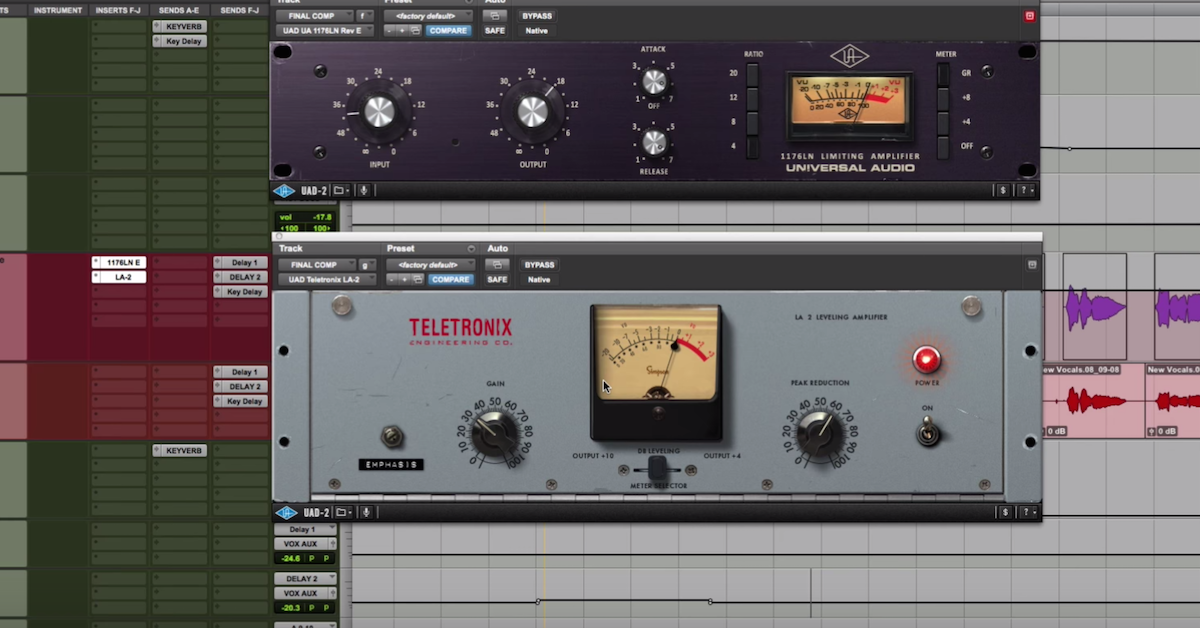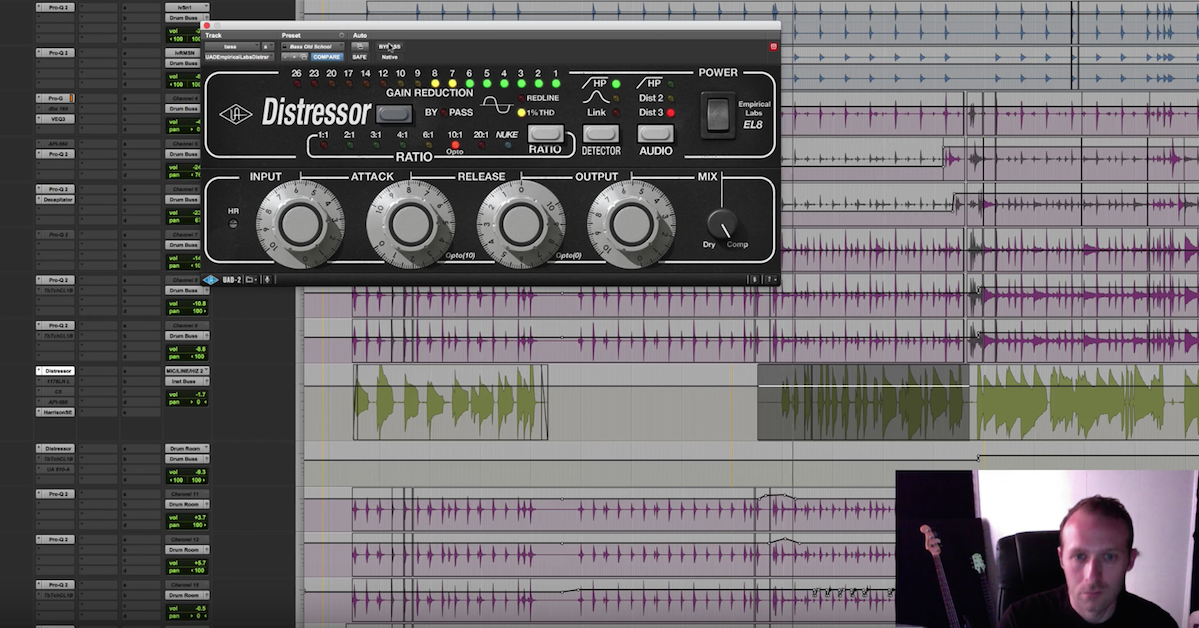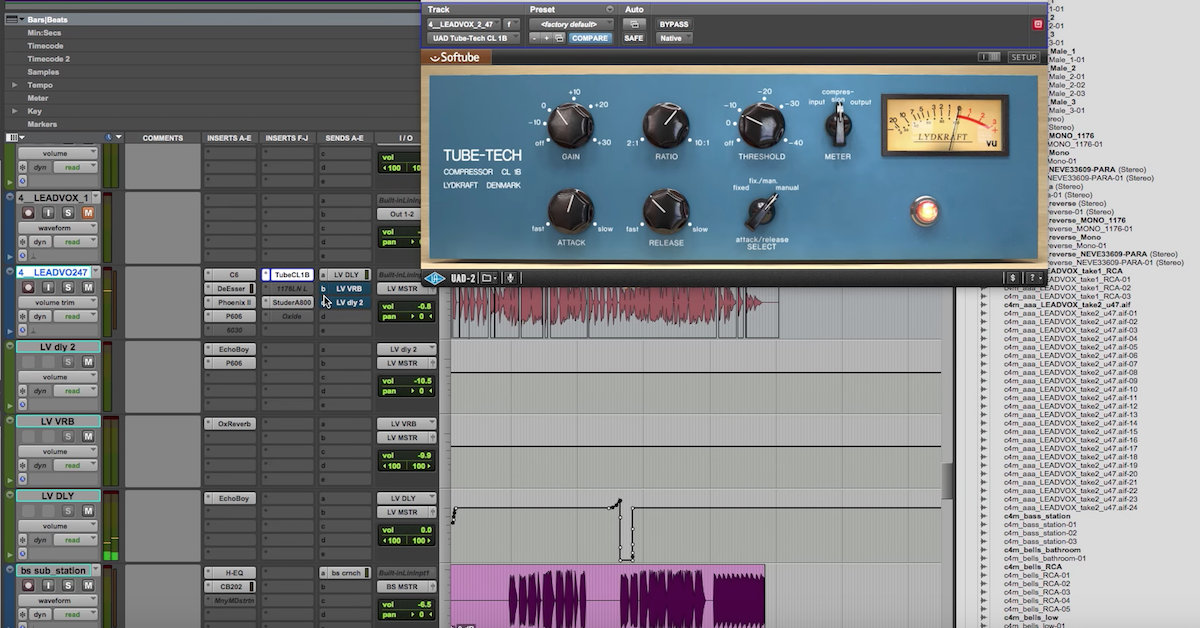5 Crucial Mistakes People Make Compressing Vocals
Article Content
In many styles of music, the vocals are the most important part of your mix. For modern genres, they often need to be up front at all times. If not, your mix will suffer.
One of the most effective tools at your disposal for crafting consistent vocals is compression. When combined with automation, compression can make your vocals sound loud, punchy, and modern.
But get compression wrong, and you can quickly ruin your hard work. This is the step where most people go wrong. Over-compression is a common problem.
In this article, I’m going to reveal the five most common mistakes that I see people make when compressing vocals, and give you some advice on what to do instead.
Also, be sure sure to grab the free PDF cheat sheet below which will help you get your vocal compression right every time…
1. Relying on Compression Alone
For modern sounding vocals, you need a crazy amount of dynamic consistency. Every word needs to be loud and clear. Yet vocalists are highly dynamic, and a vocalist can go from a whisper to a shout in a matter of seconds.
You can’t achieve the level of consistency required for a modern sound with vocal compression alone. Instead, you need to use volume or gain automation to manually ride the levels.
If you do try to achieve dynamic consistency with compression, it’s easy to over-compress the vocals. This will make them sound dull and lifeless. To avoid this, I recommend using automation.
2. Using Only One Compressor
One of your main goals when compressing vocals is to avoid over-compression. Even if you do automate the vocals, but then slam on a heavy compressor with 10dB+ of gain reduction, your vocals could still sound over-compressed.
Instead of making one single compressor do all the heavy lifting, try two or more compressors throughout your plugin chain.
Try starting with a slower compressor applying 2-3dB of gain reduction, with a ratio between 1:1 and 2:1. I tend to start with an attack time of anywhere between 5ms (for a heavier, thicker sound) and 30ms (for a punchier, aggressive sound), and a medium release time around 50ms (adjust until the compressor breathes with the tempo of the track).
Then, if you think the vocal needs more compression, which it probably will, load up a second compressor. This time use a faster attack time and higher threshold to catch the louder transients that slip through the first compressor. Again, I aim for 2-3dB of gain reduction.
Now, you can also experiment with the order of those two compressors to shape the tone. A faster compressor often works best before the slower, subtler compressor. By shaving off the louder transients before they hit your slower compressor, it’s easier to control the tone and dynamics of the vocal.
3. Only Applying Compression Directly to the Channel
Even after automating and compressing the lead vocal, some words might still be too quiet. Plus, when you start adding effects (like delays and reverb), it can push the vocal further back in the mix.
To counteract these problems, don’t just apply compression to the channel itself; instead, use some subtle parallel compression. This will pull the vocal forward again and bring up the quieter words.
Send the vocal to a new aux bus, or duplicate the channel. Apply heavy compression to this new channel. You want the vocal to be at roughly the same level every word—don’t worry if it sounds over-compressed in solo. Drop the fader down (on the new channel) and bring the volume back up until you notice the vocal becoming louder.
Then, back off the volume a touch. You only want it to be subtle. It shouldn’t be too noticeable, but when you mute the new channel you should hear the difference.
4. Using Super Fast Attack Times
Using a really fast attack time means the compressor will clamp down on the transient of the vocal. But the transients have an important role—they help the vocal cut through the mix.
This means that a fast attack time can put the vocal further back in the mix…which might be the exact opposite of what we want to achieve. Generally, an attack time above 2ms shouldn’t shave off too many transients, but be aware of this problem.
On backing vocals, you can use this to your advantage. Use a fast attack time to push the backing vocals further back in the mix. This will also stop them from interfering with the lead vocal.
5. Shying Away from Compression When Tracking
If you own an outboard (hardware) compressor, there are several benefits to using light compression when tracking vocals. As discussed earlier, applying compression in stages sounds more natural and can help you avoid over-compression.
So, a round of compression here can save you time down the road and also add some character to the vocal. Plus, using compression when recording can help the vocalist perform better, too.
If their level is more dynamically consistent when monitoring, vocalists won’t feel the need to compensate by moving closer or further away from the microphone. It also ensures that the vocal sits better in the mix, and when the vocalist listens back during the recording session, they’ll feel more confident.
So, aim for 2-6dB of gain reduction and a ratio below 3:1. Slow attack and release times tend to work best. Just don’t be too aggressive—you’re stuck with any processing you apply here. Don’t worry too much if you don’t currently own an outboard compressor—it’s not essential and you can still get great results with plugins alone.
There’s a Lot More to Learn
Compressing a lead vocal isn’t always easy, but avoiding these mistakes will help you mix vocals that sound modern and musical.
If you want to learn more about using compression on vocals and further improve your mixes, you can read my in-depth guide to vocal compression and also download my free vocal compression cheat sheet below.
More on Mixing Vocals
For more, you might also like this video below on EQ’ing vocals …







